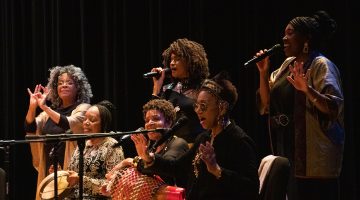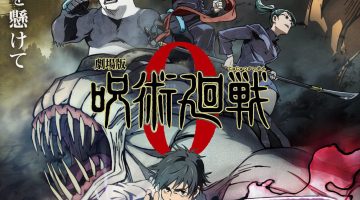
Everybody’s got a streaming service now: CBS, ABC, NBC, Disney, ESPN (three of those being owned by the same company) and now… DC Comics. DC launched their streaming platform DC Universe in late 2018 and thus far it, like most of the aforementioned streaming services, is immensely disappointing. It doesn’t have the majority of DC’s own films available––like the “Dark Knight” series, for instance––and the original content is mostly pretty lackluster. Not even the nostalgic appeal of “Batman: The Animated Series” (or any of its spinoff series like “Batman Beyond” or “Justice League”) can legitimately justify a subscription.
But then, out of nowhere, the streaming service dropped an adult animated comedy series focusing on Harley Quinn. And while it’s far from perfect, it’s easily one of the better original series I’ve seen on one of these slapped-together streaming apps.
And it’s been quite successful. It seems the creative team anticipated the positive fan reception ahead of time, as they did something quite unorthodox: they had already produced the second season before the first was even finished. Season 1 ran from late Nov. 2019 to Feb. 2020, streaming a new episode on a weekly schedule. Season 2 premiered April 3, and is currently slated to end in June. This is a rare case of a second season of a streaming original not only being released quickly, but within months of the previous season.
Much like this year’s “Birds of Prey,” which ironically released almost alongside the animated series, “Harley Quinn” focuses on Harley’s life after finally breaking up with her abusive boyfriend The Joker. Harley begins by crashing at her best friend Poison Ivy’s apartment, before deciding to strike out on her own, gather a crew and become a legitimate supervillain in her own right.
The series primarily succeeds due to its impressive voice cast. Kaley Cuoco of “Big Bang Theory” fame brings a lot of great energy to Harley, capturing her over-the-top and oddly charming nature which often overshadow her more unlikable character traits––like psychopathy and sadism, which Cuoco’s version doesn’t shy away from showing. It’s quite a difficult balance to maintain, and Cuoco does so admirably. Cuoco also ditches the “Joisey” accent often associated with Harley Quinn, and it’s relieving. Too often, actresses portraying Quinn do a terrible job attempting to mimic Arleen Sorkin’s original voice and it can come across as very forced, aggravating and cringe-inducing. Cuoco brings her own take and it’s a welcome change, portraying Harley as more angry and impulsive…and less loopy and child-like.
However, Harley as a lead can be quite exhausting, mostly due to her immaturity, general amnesia about any lessons she’s learned and her position as a wacky, unstable character. Harley was never really intended to be a lead, and thus her ability to be a three-dimensional human being with depth is hindered somewhat by those character traits. It’s the same reason why The Joker shouldn’t be a lead: his character is not meant to evolve or change. This is something the writers will have to grapple with if the series continues, as its status as an episodic comedy––and one deeply rooted in self-awareness and irony at that––also can hinder attempts to develop characters in a meaningful way.
Lake Bell voices Poison Ivy, who is portrayed as a much more subdued and grounded presence than in a majority of Batman-related media, and Bell’s performance helps balance against Harley’s generally overwhelming personality. Bell does a terrific job delivering the show’s quippy, snarky dialogue in a strictly disinterested and deadpan way that just works really well, since a lot of the other voice performances are intentionally obnoxious and, well, cartoonish. Rewriting Ivy from a generic seductress archetype into someone whose misanthropy presents itself as aloofness and general disinterest is a genuinely creative decision and the writers demonstrate they have a great understanding of what new interpretations can be created from these characters while staying true to their core behaviors.
The rest of the cast are excellent, with stand-outs being Tony Hale of “Veep” and “Arrested Development” as Doctor Psycho, Ron Funches as King Shark, James Adomian––listeners of the podcast “Chapo Trap House” may recognize the name, as he is a frequent guest––doing his best Tom Hardy impression as Bane, Alan Tudyk––a highly prolific voice and character actor––capturing some of Mark Hamill’s manic enthusiasm as The Joker, and Matt Oberg––from Comedy Central’s sadly forgotten cult classic “Ugly Americans”––as Kite Man, the best character.
Just skimming the list of cast members is incredible. The range of talent DC was able to accrue for this project is genuinely impressive, with “Curb Your Enthusiasm” stars J.B. Smoove and Wanda Sykes, in addition to “Seinfeld” alum Jason Alexander and Wayne Knight also starring, and Giancarlo Espostio of “Breaking Bad” and “Do the Right Thing” fame as Lex Luthor in a handful of episodes. It’s also telling that the creators sought out performers like Smoove, Sykes, Knight and Alexander given much of the show’s runtime is spent on the comic incongruity of seeing iconic supervillains and heroes engaging in daily mundanities and a number of absurd scenarios, much like “Curb” or “Seinfeld”’s mundane scenarios that spiral into bizarre chaos.
The humor is generally pretty good, but can be hit-or-miss depending on the episode. Not every joke lands, and sometimes the show’s balance of bloody violence and action with tongue-in-cheek, cynical humor can be a little jarring and tone-deaf. An example being in a recent episode where the humor is, again, from incongruity: Ivy and Harley are having a heart-to-heart conversation about relationships and change while Ivy takes out her anger on corrupt chemical plant executives by force-feeding them toxic waste until they explode. It’s a bit too disturbing and squeamish an image to really work as a joke, and the strict reliance on incongruity for humor starts to wear thin if pushed to this extreme.
This may become less of a problem in later seasons, as most shows are a little tonally awkward at first, and this blend of humor and violence is genuinely difficult to pull off––”South Park” is the only show I can think of that consistently plays graphic violence for laughs while never becoming straight-up cruel, sadistic or uncomfortable.
On the whole, however, the show usually has at least a handful of genuinely funny moments every episode, and the novelty of the concept of an adult-oriented superhero comedy cartoon––specifically the use of already-established characters in a new context––carries a lot of the show. It’s unsurprising, also, that the show thrives on “Archer”-style, dialogue-driven humor laden with references, puns, malapropisms, etc. when one of its creative heads and writers, Dean Lorey, worked on “Arrested Development,” which was the most extreme example of that style.
The animation is decent, but relatively bland. Some of the character designs are nice––such as Poison Ivy and Mr. Freeze––but overall the animation style is comparable to every other generic animated superhero show, except with more blood, and most of the characters are designed in keeping with traditional designs from the comics. What is interesting in the aesthetic choice to keep the visual style of the show like a superhero cartoon, with more “realistic” character models, as opposed to the more caricaturish and exaggerated styles of most adult comedy animation, which helps sell this as a legitimate superhero series despite its lampooning of the genre, while making the violence and comedy stand out against its visual aesthetics.
A winning aspect of the series––and a strength of ts ensemble approach and goofier tone––is that it’s able to shine a light on a number of genuinely obscure and forgotten DC characters: King Shark, Kite Man, Wonder Woman’s misogynist nemesis Doctor Psycho, Dr. Trapp, Jason Praxis, The Condiment King, KGBeast, Queen of Fables and Damian Wayne are all characters the general public will most likely be unfamiliar with.
It shows a real appreciation and love of the source material by the writing staff to not only feature these characters prominently, but to also affectionately parody them. They even incorporate Kite Man’s “Hell Yeah!” catchphrase from the most recent incarnation of the character in comics. But, given its status as an original series on a rather niche streaming platform, the likelihood that the show and these characters will reach an audience beyond already-dedicated-comic book buffs is low.
And that may be the biggest gripe with the series at all. It lacks the platform to really reach a wider audience. If this were to be on an already-established streaming service like Netflix or even on cable, it could’ve really found a wider audience and more people would be talking about it and recommending it. Because it is a good show.
It reinvents and recontextualizes familiar Batman and DC Comics characters in ways that are humorous and genuinely creative while not becoming unrecognizable from traditional incarnations––the latest Mr. Freeze-centered episode is a great example, and one of the show’s stronger attempts to be genuinely touching––and is a lot of fun. Despite some awkward missteps in terms of humor and character development from time to time, the show manages to be entertaining enough to warrant a look.
It’s a bit of a catch recommending it, though. The only way to really recommend watching it is by pirating it or watching the clip compilations on YouTube that cover the highlights of every episode (kind of streamlining the watching process), because even it’s not worth subscribing to DC Universe for. But at the same time, only by paying for it will the show be allowed to continue, and it has enough potential to where it’d be nice to see where it goes. That’s why it probably would’ve been more successful as a widely-available series. “Harley Quinn” has the potential to be a real cult hit beyond die-hard DC fans, but it’s not being given that chance, and if the DC Universe doesn’t succeed as a platform—which it probably won’t—the show probably won’t ever get that chance.
But, for now, “Harley Quinn” has a lot to offer: it’s pretty funny, very violent, and fast-paced, with every episode kind of breezing by. It will definitely provide enough colorful action to distract viewers from the soul-killing malaise of everyday life at the moment, and since Season 2 is currently being released, it’ll give viewers something to look forward to every week until June. It’s almost akin to the Adam West “Batman” series of the 1960s, though slightly more respectful of the source material, and not explicitly campy or corny to the extent of the West series. Both are unapologetically self-aware and comedic takes on the characters, so if audiences can accept “Harley Quinn” as just that, it won’t disappoint.
Matt Cotter can be reached at ryleejackson@sagebrush.unr.edu, or on Twitter @NevadaSagebrush.











